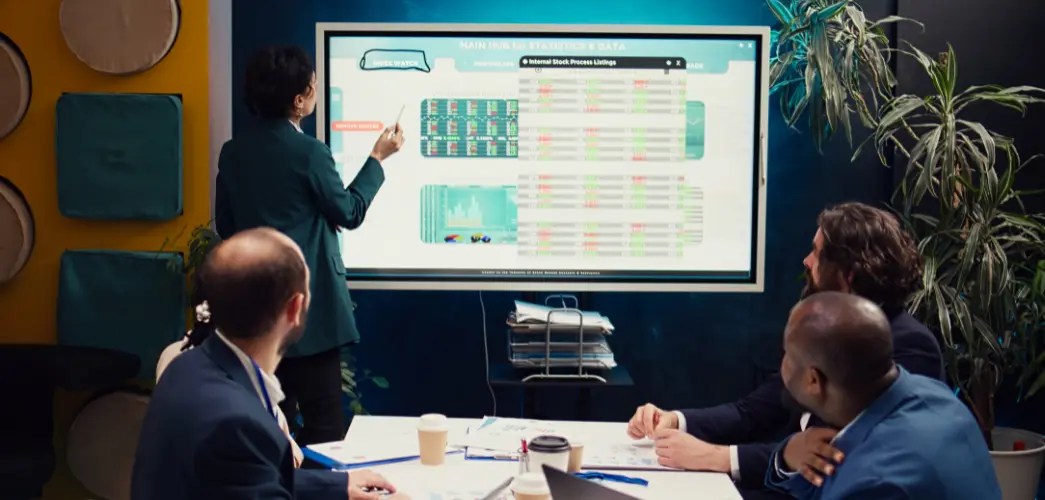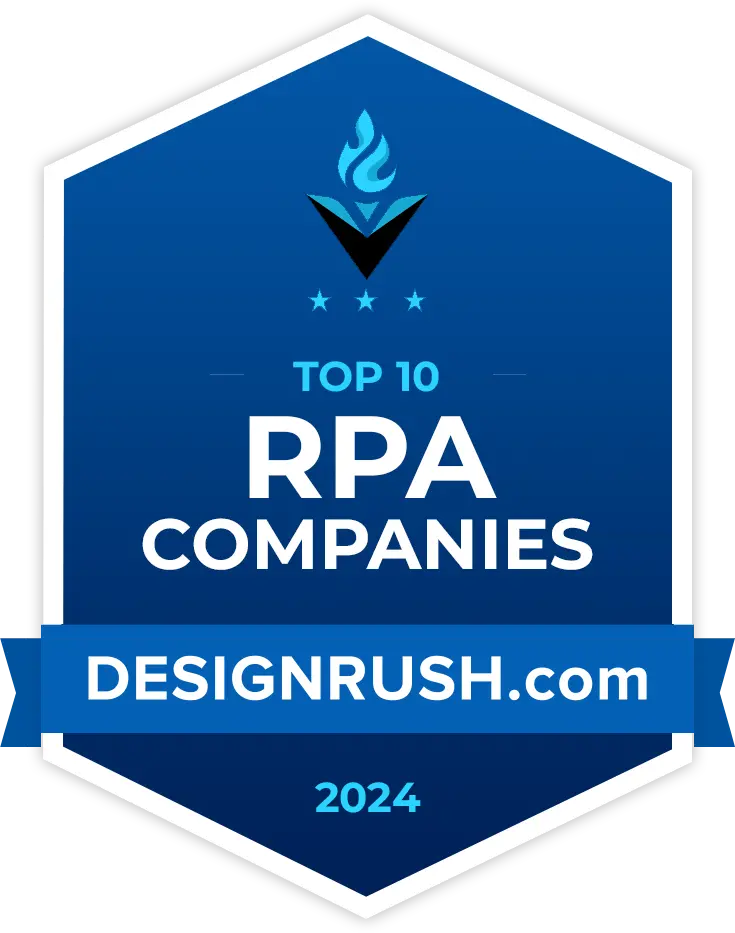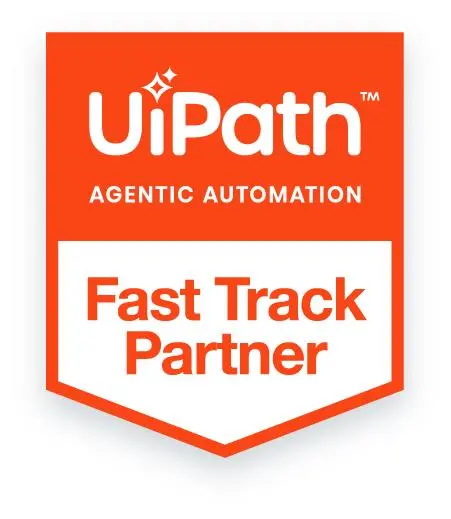
Key Takeaways
- Agentic Process Automation (APA) blends RPA with AI agents and LLMs, enabling systems to make decisions, adapt in real time, and operate autonomously across complex workflows.
- RPA has evolved into a digital operating model. With GenAI, IDP, and process mining, enterprises now build CoEs to scale automation across all business units.
- RPA tools in 2025 are cloud-native, scalable, and API-first, offering seamless integration with SaaS platforms and hybrid environments, replacing traditional on-premise deployments.
- Low-code/no-code RPA platforms let business technologists automate workflows independently. IT ensures security, compliance, and governance, making automation accessible and scalable.
- The fusion of generative AI with RPA enables smart automation of front- and back-office processes, handling unstructured data, and human-like decision-making in customer service and document-heavy domains.
As we move into 2025, robotic process automation will become more powerful and intelligent. It is no longer just about automating simple, repetitive tasks. Today, RPA is part of a bigger picture, including artificial intelligence (AI), machine learning, and thoughtful decision-making. Businesses use these advanced technologies to create smarter, faster, and more efficient processes.
RPA has grown into an ecosystem. It now works closely with AI tools, data platforms, and cloud services. Automation can do more than just follow rules—it can now learn, adapt, and make decisions. Autonomous agents also play a significant role. These AI-powered bots can handle complex tasks independently, improving speed and accuracy.
Understanding this shift is very important. The way automation works in a business is changing fast. Firms must keep up with the latest tools, strategies, and trends to lead their companies toward better performance and long-term success. Falling behind could mean missed opportunities and higher costs.
In this blog, we will examine the key RPA trends for 202, highlight the top tools and platforms driving this change, and outline the main focus areas CIOs should consider. These include choosing the right technologies, building strong teams, and setting up systems that can grow with the business.
RPA in 2025 will be more intelligent, connected, and powerful than ever. For CIOs, now is the time to act by embracing innovation and planning for a future where automation is a core part of every business.
Also read: Building Centers of Excellence for Enterprise-Wide Implementation.
RPA Trends in 2025: The Era of Intelligent, Autonomous Automation
As we approach 2025, robotic process automation has evolved into a far more advanced and strategic function within enterprises. It is no longer limited to rule-based task execution—instead, it now forms the backbone of intelligent, adaptive, and autonomous business process automation. Let’s explore the key trends defining this transformation.
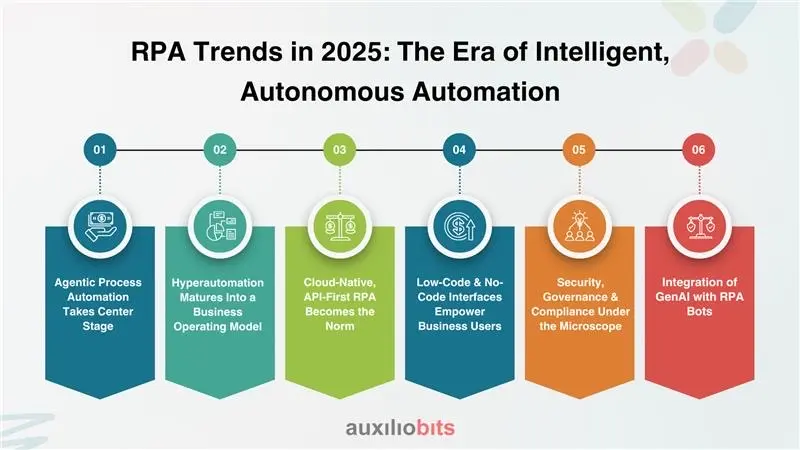
1. Agentic Process Automation Takes Center Stage
Agentic process automation represents the next leap in intelligent automation. APA combines RPA with AI agents, large language models (LLMs), and orchestration layers to enable fully autonomous business operations. These agents go beyond simple rule-following—they perceive context, learn from data, and dynamically respond to complex scenarios.
For example, in the mortgage industry, underwriting processes can now be handled by AI agents that collect documents, extract relevant data using OCR and NLP, assess risk with predictive analytics, and communicate with customers in natural language. This reduces manual intervention and accelerates decision-making.
Key Shift: From pre-programmed automation to context-aware, reasoning agents that can operate autonomously and collaborate across systems.
2. Hyperautomation Matures Into a Business Operating Model
Hyperautomation has evolved from a buzzword into a practical enterprise-wide strategy. It now encompasses GenAI, Intelligent Document Processing (IDP), process mining, iBPMS (intelligent Business Process Management Suites), and more. Companies are no longer just automating tasks but redesigning how entire business functions operate.
CIOs are focusing on building Automation Centers of Excellence (CoEs) to govern and scale automation across departments. These CoEs act as innovation hubs that align automation efforts with business KPIs, ensuring automation delivers measurable outcomes such as reduced operational costs and improved customer experiences.
Strategic Priority: Institutionalizing automation as a core element of digital transformation.
3. Cloud-Native, API-First RPA Becomes the Norm
Today’s RPA tools are cloud-native, offering seamless deployment, elasticity, and centralized management. API-first design and event-driven architectures enable better integrations with SaaS platforms, ERP systems, and data lakes. This is especially valuable for enterprises operating in hybrid or multi-cloud environments.
Legacy on-premises RPA platforms are increasingly being replaced by modern SaaS-based automation suites that offer greater flexibility and reduced infrastructure overhead.
Implication: Enterprises are moving toward scalable, API-centric automation ecosystems that support real-time responsiveness.
4. Low-Code & No-Code Interfaces Empower Business Users
The democratization of automation continues with the rise of user-friendly, low-code, and no-code development platforms. These interfaces allow business users—such as analysts, operations managers, and even customer service reps—to build, test, and deploy bots with minimal IT support.
While this accelerates automation delivery, IT teams still play a key role in setting governance rules, ensuring security, and managing platform health.
By the end of 2025, over 60% of automation initiatives will be driven by business technologists.
5. Security, Governance & Compliance Under the Microscope
Bots handle sensitive data in industries like healthcare, banking, and insurance. Enterprises are adopting “shift-left” security practices, embedding identity and access management (IAM), observability, and compliance checks early in the bot development lifecycle.
Bots now follow enterprise-wide IAM policies, enabling better auditability and reducing data breaches or misuse risk.
Emerging Practice: Treating bots like digital employees—with roles, permissions, and continuous monitoring.
6. Integration of GenAI with RPA Bots
Generative AI is revolutionizing RPA workflows by unlocking the ability to handle unstructured data. GenAI can summarize documents, interpret customer queries, draft emails, and provide insights in natural language. When combined with transactional RPA bots, it creates robust end-to-end automation pipelines.
For instance, a GenAI-powered chatbot in customer service can answer questions and trigger RPA bots to update systems, initiate refunds, or escalate issues.
Use Case Highlight: GenAI enhances the “front office” experience while RPA manages the “back office” execution.
In 2025, RPA will no longer be a siloed automation effort—it will be a dynamic, intelligent ecosystem. CIOs and enterprise leaders must embrace these trends to stay competitive and future-ready.
Leading Tools and Platforms in 2025: Powering the New Wave of Intelligent Automation
As enterprises adopt more intelligent and autonomous automation strategies, their tools must evolve. In 2025, the RPA landscape is rich with platforms that combine traditional automation capabilities with cutting-edge AI, low-code interfaces, and orchestration features for managing autonomous agents. Below are the leading tools shaping the future of enterprise automation:
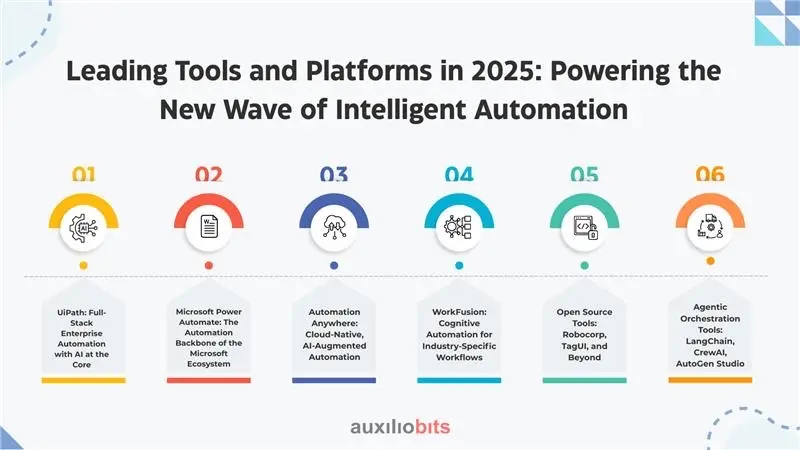
1. UiPath: Full-Stack Enterprise Automation with AI at the Core
UiPath continues to dominate the enterprise automation space with its broad and deep feature set. It has transformed into a full-stack intelligent automation platform, integrating capabilities across process discovery, task mining, RPA, AI, testing, and orchestration
Key Highlights in 2025:
- UiPath Autopilot: A GenAI-powered companion that helps build automation workflows using natural language prompts.
- Process Mining & Task Mining: Advanced mining tools to continuously identify automation opportunities and optimize processes.
- Test Suite: Enterprise-grade testing capabilities for automation assurance, especially in regulated industries.
- AI Integrations: Seamless compatibility with OpenAI, Azure OpenAI, Google Cloud Vertex AI, and custom ML models.
- Deep Microsoft CoPilot Integration: Enhances productivity by automating workflows directly from Microsoft 365 applications.
UiPath remains the go-to for enterprises looking for an end-to-end automation platform with AI embedded throughout the automation lifecycle.
2. Microsoft Power Automate: The Automation Backbone of the Microsoft Ecosystem
Microsoft Power Automate has significantly expanded its capabilities. Initially known for simple workflow automation, it is now a powerful enterprise tool integrated tightly with the Microsoft ecosystem.
What’s New in 2025:
- AI Builder: Empowers users to create AI models for document processing, classification, and prediction tasks.
- Process Mining: Enhanced by the acquisition of Minit, allowing deeper visibility into process inefficiencies.
- M365 and Teams Integration: Automations can be triggered from Outlook, Teams, SharePoint, and more.
- Microsoft CoPilot Compatibility: Users can build and execute automation workflows within Office apps using GenAI-powered natural language commands.
Power Automate is especially popular in enterprises that have already invested in Microsoft 365 and Azure. It offers low-friction, deeply integrated automation.
3. Automation Anywhere: Cloud-Native, AI-Augmented Automation
Automation Anywhere (AA) continues to evolve with a strong focus on cloud-native deployments and ease of use for non-developers.
Key Strengths:
- Automation Co-Pilot: Empowers business users to launch automations directly from applications like Salesforce or ServiceNow.
- Bot Store: A rich marketplace of pre-built bots that reduce development time.
- AI Integration: Strong support for embedding AI models into RPA workflows for document classification or sentiment analysis tasks.
- Real-Time Analytics: Enhanced dashboards for monitoring bot performance and business impact.
AA is a good fit for organizations pursuing agile, cloud-first automation strategies with strong user empowerment.
4. WorkFusion: Cognitive Automation for Industry-Specific Workflows
WorkFusion has carved a niche in cognitive automation, combining RPA with machine learning and natural language processing (NLP) for more complex, judgment-based tasks.
Industry Focus:
- Banking: Automates KYC (Know Your Customer), anti-money laundering checks, and onboarding.
- Insurance: Streamlines claims processing with AI models that understand documents and assess context.
- Healthcare & Legal: Uses ML to handle unstructured data and regulatory-heavy workflows.
WorkFusion is ideal for regulated industries needing automation that goes beyond rule-based scripting.
5. Open Source Tools: Robocorp, TagUI, and Beyond
Open-source RPA is gaining momentum due to its flexibility, transparency, and cost-effectiveness, especially for developer-centric teams.
Popular Tools:
- Robocorp: A Python-native RPA platform with a strong developer community and cloud orchestration via Control Room.
- TagUI: Lightweight and easy to script in multiple languages, ideal for rapid prototyping and niche use cases.
These tools offer high flexibility and are increasingly used in startups, mid-sized firms, and automation-first organizations prioritizing customization and control.
6. Agentic Orchestration Tools: LangChain, CrewAI, AutoGen Studio
The rise of autonomous AI agents has created a new class of orchestration tools designed for managing LLM-driven workflows.
Key Features:
- LangChain enables the creation of chains of thought and reasoning with LLMs.
- CrewAI: Facilitates collaborative task execution among multiple specialized agents.
- AutoGen Studio: Visual interface to design, test, and deploy agent-based workflows.
These platforms integrate seamlessly with AI services like Azure AI Studio, OpenAI, and Anthropic Claude, enabling a new era of agentic automation in which bots don’t just follow instructions—they plan, reason, and adapt.
In 2025, the automation stack is becoming more intelligent, composable, and AI-native. Whether you’re a CIO modernizing legacy systems or a developer building autonomous agents, the diversity of tools available today allows you to design automation ecosystems tailored to your organization’s strategic goals.
Conclusion
As RPA continues its transformation into intelligent, autonomous automation, CIOs must take proactive steps to lead the change. From embracing GenAI and agentic orchestration to investing in CoEs and low-code platforms, the future of enterprise automation demands agility, foresight, and innovation.
Now is the time to assess your automation maturity and realign your strategy—before the opportunity gap grows. Start building your next-gen automation ecosystem today. For more information, contact Auxiliobits.




